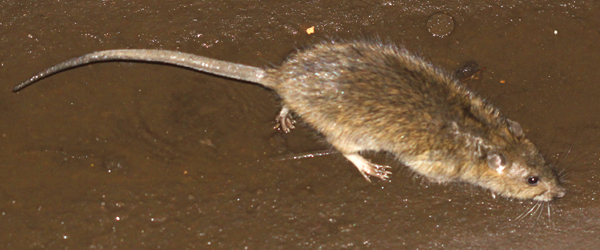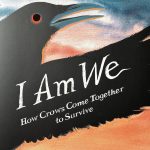New York City’s subway stations are a great place to observe Rattus norvegicus, otherwise known as the Norway Rat, the Brown Rat, the Wharf Rat, the City Rat, the Alley Rat, the Hanover Rat, the House Rat, and the Sewer Rat, among other names. And while New York City, like cities on every continent except for Antarctica, has a large population of rats, the myth that there is a rat per person (or more) is just that, a myth. New York City’s rat population is unknown but it is extremely unlikely that there are as many rats as people. There are, however, as least as many stories about rats as there are people in New York City (some of the stories are rather disgusting), though tales of giant rats are certainly exaggerated. Norway Rats rarely exceed 500 g (a bit over a pound) in weight and stories of rats as large as cats are probably the result of a few too many drinks before staggering off to the subway late at night.
For some reason rats seem to bring out myths and falsehoods. Maybe people just don’t want to look too closely at a creature that lives off of the waste of human society, preferring to keep them out of sight and out of mind. Even the scientific and most common common name are misnomers: Norway Rats actually originated somewhere in central Asia, most likely in China!
One often sees rats in the subway system but the idea that there are vast underground “rat cities” is another myth. Most rats live at ground or basement level and rats never congregate into anything remotely resembling an underground rat metropolis. Rats don’t need to make rat cities because they do just fine in human cities. In fact, rats are probably the second-most successful mammal in the world, behind humans.
So the next time you see a rat, while you don’t want to pet it of course, it doesn’t hurt to at least give the lowly Rattus norvegicus some grudging respect for surviving and even thriving on what we throw away as trash.
And, if for some reason you ended up on this blog looking for a way to control rats on your property, well, New York City’s Department of Health and Mental Hygiene has a very helpful pamphlet on the topic.














I find them interesting, social of course, as well as quite intelligent. Though we do not have them in my neighborhood, they are near by. Watched as a Red-tailed Hawk got one the other day, so they are most certainly nearby. Between Rats and Opossums, they love to eat the garbage that miss the cans, and then the Raccoons take care of that. Nice post!
The rats on the subway tracks can be amusing to watch while waiting for the R train (I see them more on the R/N line than the E/F line), but I don’t enjoy seeing them in our city parks. They have become regular denizens of Flushing Meadows, probably because of the lax clean-ups. Fortunately, the Snakehead Fish now inhabiting Meadow Lake will eat them all. And, then the Alliators from the sewers will eat the Snakehead Fish!
My wife says your full of it and she has most certainly seen rats the size of Cats, usually close to the River. She figures you found a runt.
The rat in the last pic is rather a pretty shade of agouti. They really are everywhere – my barn cat caught quite a large one the other day – here in the Chihuahua desert in Southern New Mexico 25 miles from the nearest town with just a few scattered ranches to scrounge from. One of these days I’ll write MY post-apocalyptic novel in which only the rats, coyotes, and cockroaches have survived. *chuckle*
OK, it goes without saying that I’m weird (e.g., I don’t hate house sparrows or starlings), so let me add to that weirdness by saying I love this post! Nature never made anything that I don’t find fascinating.
(BTW, down here in Texas we do have rats the size of house cats. Bigger in fact! Oh, wait, I was just told they’re called nutria, not rats. Forget I mentioned it.)
Whilewild rats should not of course be handled, in defense of their species I should point out they are the same as the domestic white rat. The domesticated form actually makes quite a good pet, certainly better than a hamster or gerbil (less likely to bite, more sociable, and a good deal smarter).
Track Rabbits! I love watching them. I’ve always figured that they’re doing us a favor by getting rid of so much garbage. And Alan is right that the domesticated ones make good pets; I’ve had several over the years, including a hairless one named Right-Said Fred who was about as good a mascot as anyone could ask for; and Buddy Lee – who, while not as big as a cat, was bigger than most of the Yorkshire Terriers you see around.